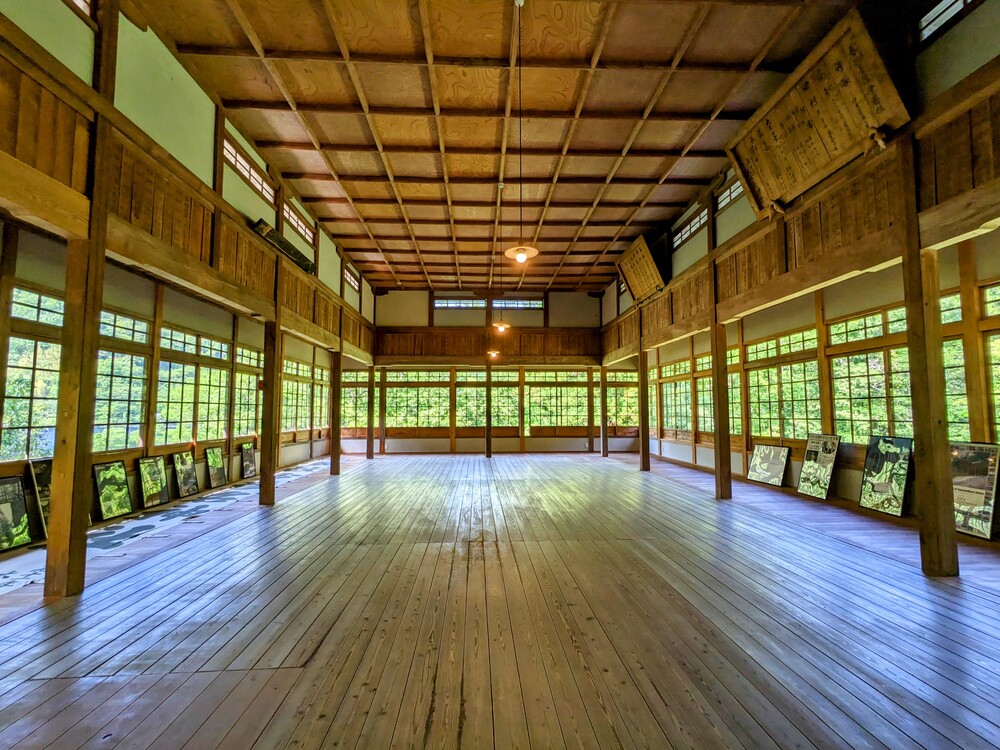- HOME
- Search for tourist spots
- Sukunahikona Shrine
Sukunahikona Shrine
This shrine was built to honor the final resting place of Sukunahikona-no-Mikoto, a deity from Japanese mythology who appears in both the Kojiki and Nihon Shoki, Japan's oldest chronicles. The main shrine building was completed in 1932, followed by the Sanroden (Pilgrim's Hall) two years later.


The Sanroden is an impressive example of kakezukuri (overhanging-style architecture), with nearly 90% of its floor area extending out from the northern slope of Mt. Yanase along the approach path. Its longest support beam reaches 8.3 meters. The structure is a blend of traditional Japanese timber joinery and modern engineering methods. The upper floor features a bright, open interior, with glass sliding doors on three sides, allowing visitors to enjoy sweeping views of the surrounding nature.
Location
Information
- Location
- Sugata-cho, Otakeoto 937-2 , Ozu
- Time
- All day (Volunteer guide available on Saturdays, Sundays, and public holidays (10:00-16:00))
- Holidays
- Open year-round
- Price
- Free
- Access
-
- Parking available
- Season (best time to visit)
- Anytime
- Note
- Please note that the basic information is subject to change. For the latest details, please contact each facility directly.
Area Map
Local Recommendations
Tourist facilities
nature/famous places
Ozu Castle Town townscape
Ozu Honan-area town walk MAP Castle Town Famous buildings Restored old folk house shops and hotels Resident...
See details
Activities
Tourist facilities
Ozu Castle
One of the largest wooden restored castle towers in Japan Since the wooden restoration of the castle tower in 2004, it has become the center of Ozu as a symbol of Ozu city...
See details
Tourist facilities
Garyu Sanso (villa)
A famous Sukiya-zukuri building with the ultimate in style.The fresh greenery and autumn leaves are reflected like a mirror on the clear blue surface of Garyu-buchi. ...
See details
Tourist facilities
Bansenso
Origin of Bansenso A famous international building by Denzaburo Matsui (187...
See details
Tourist facilities
gift
Ozu Akarengakan
It was built in 1901 as the head office of the Ozu Commercial Bank. The building is mainly a brick structure built in England, and the roof ...
See details
Tourist facilities
gift
Activities
Ozu Machi no eki 'Asamoya' Ozu Tourist Information Center
Ozu A merchandise facility that sells local specialties. Featuring free parking, the hotel is also a great base for sightseeing in Ozu.
See details
Tourist facilities
Iyo-Ozu Station Tourist Information Center
Iyo-Ozu Station Tourist Information Center opened on Friday, April 19, 2019 as a tourist information center and merchandise sales facility. ...
See details
Activities
NIPPONIAHOTEL Ozu Castle Town
This old folk hotel is a renovated historic mansion that combines the beauty of modern and past architecture. The hardships of the mansion era...
See details
nature/famous places
Ozu Shrine
Located on Mt. Kagura in the eastern part of Ozu Castle, this venerable shrine has been revered by generations of Ozu clans. In 1331 ...
See details
nature/famous places
Ohanahan Street
This is an area where the town layout and rows of houses from the Edo period have been faithfully preserved, allowing you to get a glimpse of what life was like back then. North...
See details
nature/famous places
Sukunahikona Shrine
It was built to worship the place where Sukuhikona no Mikoto (a god in Japanese mythology) who appeared in the Kojiki and Nihon Shoki was said to have died...
See details
Activities
Tourist facilities
Pokopen Yokocho (market)
In the old days, everyone played games like can kicker and hide and seek. The nostalgic atmosphere of the 1950s has been recreated...
See details


